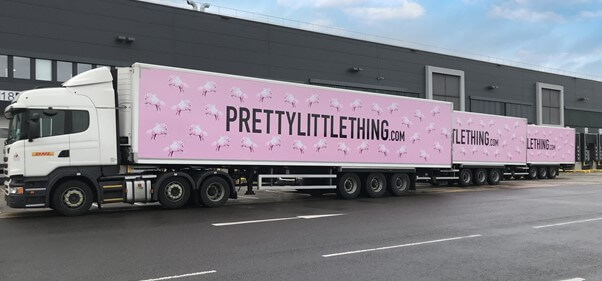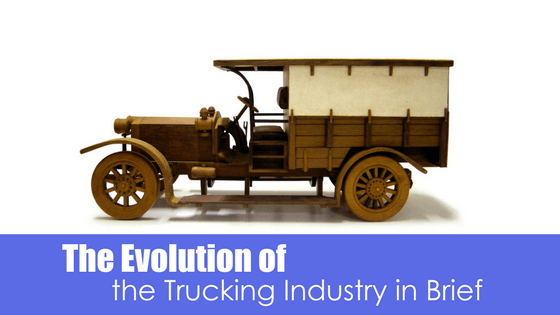
Imagine a bustling highway, and in the midst of traffic, a massive truck adorned with captivating designs—an ingenious mobile billboard. In today’s attention-demanding digital era, truck advertising emerges as a creative and distinctive strategy, transforming fleets into dynamic canvases that surpass traditional advertising boundaries.
This exploration delves into the intricacies of truck advertising, revealing how businesses adapt to local nuances and national demands. From the potency of mobile advertising to seamless integration with digital marketing, we’ll dissect successful strategies and showcase real-world case studies to navigate the landscape of truck advertising.
Truck advertising, a facet of outdoor marketing, utilizes branded trucks adorned with logos and messages to showcase and endorse services, brands, or products. These ads strategically position themselves, targeting either the expansive local audience within Metropolitan Statistical Areas (MSA) or a national audience by utilizing trucks that traverse broader geographical areas. Integrating truck side ads into your media mix proves pivotal, offering an efficient and economical approach to connect with the intended audience cost-effectively.
The Evolution of Truck Advertising

Mobile advertising has undergone a remarkable evolution, transitioning from simple hand-painted logos on horse-drawn wagons to the sophisticated LED-lit trucks seen today. In its early days, businesses utilized horse-drawn wagons as moving billboards, delivering messages as they moved through towns. The advent of automobiles ushered in larger vehicles with mounted billboards on flatbeds, capitalizing on high-foot traffic areas.
The 1990s marked a pivotal shift with the introduction of vinyl wraps, allowing for intricate designs and detailed advertisements that enveloped entire vehicles. This innovation significantly enhanced the visual appeal of mobile advertising. The digital age brought about LED-lit trucks equipped with large screens capable of showcasing dynamic content, from videos to changing graphics. This digital flexibility enabled multiple advertisements on a single truck, optimized based on the time of day or target audience.
Continuing the trajectory of innovation, modern mobile advertising trucks now feature interactivity and real-time updates. Touch-screen capabilities and the ability to alter content based on current events or trends engage audiences more effectively. Furthermore, integration of data and analytics has transformed mobile advertising into a data-driven enterprise. LED-lit trucks equipped with Bluetooth or Wi-Fi tracking gather viewer engagement and demographic data, enabling businesses to measure campaign effectiveness and refine strategies in real-time.
As technology advances, the future of mobile advertising holds exciting possibilities. One certainty remains—the dynamic nature of this advertising form, always on the move, will continue captivating and engaging audiences in the years to come.
Exploring the Nuances: Local vs. National Advertising Strategies

In the dynamic realm of marketing, two critical factors shape strategies – the scale of the company and the target market. A pivotal distinction arises when considering local and national advertising strategies. This article delves into the intricacies that set these approaches apart, shedding light on the nuanced tactics that businesses employ to resonate with their intended audiences.
1. Social Media Dynamics
Local Perspective:
For local businesses, social media serves as an interactive hub. Engagement thrives on making connections through localized content, referencing local events, and embracing the community’s culture. Smaller companies, intimately aware of their surroundings, inject humor and authenticity into their posts, fostering a genuine rapport with their audience.
National Landscape:
In contrast, national corporations navigate a different social media terrain. Their expansive reach demands a more generic approach, focusing on broader national events. Interaction becomes a challenge, with responses limited to a fraction of comments. The scale necessitates a strategic balance between brand identity and mass appeal.
2. Marketing Methodology
National Emphasis:
National marketing revolves around brand promotion. Large corporations strategically position themselves to enhance brand recognition, leveraging frequent exposure to build trust among consumers. Consistent brand visibility on a national scale fosters a sense of reliability.
Local Focus:
Conversely, local businesses prioritize marketing products and delivering exceptional customer service. Their emphasis lies in building a strong local presence through community engagement and participation in local activities. Charitable initiatives and grassroots efforts contribute to establishing a reputable local brand.
3. Medium Utilization
National Outreach:
National marketing harnesses mediums capable of reaching audiences across the entire country. From national television to magazines, the focus is on widespread dissemination. Customizing promotional materials for different regions proves impractical, urging reliance on generic campaigns.
Local Penetration:
Local advertising thrives on proximity. Utilizing local television, radio, newspapers, and even print materials like flyers, local businesses connect directly with their community. Personalized giveaways, such as t-shirts or bags, create a tangible link between the business and its local consumers.
4. Budgetary Variances
National Investments:
The sheer scale of national marketing demands substantial financial investments. Thirty-second slots on national TV or ads in renowned magazines come with hefty price tags, averaging hundreds of thousands. These costs are justified by the need to reach a vast national audience.
Local Efficiency:
Local marketing, being more geographically confined, allows for cost-effective approaches. Advertising on local platforms and leveraging free options like the Yellow Pages or email lists proves economically viable. The flexibility to tailor strategies to a smaller audience contributes to efficient budget allocation.
5. Website Focus
Local Optimization:
Local businesses optimize their websites for regional impact. Incorporating location details in headings, titles, and content, coupled with leveraging tools like Google Places, ensures visibility within the local community. Aligning the website with local events enhances relevance.
National Appeal:
National companies structure their websites for a broader audience. Referencing relevant national events and maintaining a less personalized tone caters to a diverse demographic. Ensuring mobile-friendliness remains paramount, considering the substantial portion of traffic originating from mobile devices.
In the intricate dance of marketing strategies, whether local or national, businesses tailor their approaches to align with the unique characteristics of their target audience. The choice between a localized, community-centric strategy and a nationally oriented, brand-focused one hinges on understanding the distinct needs and dynamics of each market segment.
Understanding Your Customers: How Demographics and Psychographics Can Help

As a retailer navigating the landscape of consumer preferences, understanding what to stock and sell is pivotal. While personal preferences might guide some choices, a more strategic approach involves delving into the intricacies of customer demographics and psychographics. In this article, we not only explore the nuances of these factors for retailers but also draw parallels with the dynamic world of truck advertising.
The Core of Consumer Understanding
For both retailers and advertisers, knowing the intricacies of their audience is paramount. Identifying and categorizing consumers based on demographics, interests, and other factors is a common practice. This segmentation allows businesses to tailor their strategies to specific market segments, ensuring a more targeted and effective approach.
Demographics: Beyond Basics
Demographics, encompassing factors like ethnicity, age, gender, income, marital status, education, and homeownership, provide a foundational understanding of individual consumers. This information categorizes us without delving into our personalities. Successful retailers often leverage demographics to identify their ‘core’ or ‘target’ customers.
Local Dynamics in Demographics
In the realm of truck advertising, understanding local demographics becomes a crucial element. Local businesses can utilize trucks as mobile billboards, strategically navigating through neighbourhoods where their target audience resides. By aligning with the cultural preferences and interests of the local community, these businesses create a more personalized and impactful advertising experience.
National Campaigns: Reaching Far and Wide
On the flip side, national advertising campaigns require a broader perspective. Trucks equipped with compelling visuals and messages can traverse vast distances, reaching diverse audiences across the country. National advertisers must craft messages that resonate universally, relying on the mobility of trucks to maximize exposure.
Psychographics: Unveiling Lifestyle Trends
Beyond demographics, psychographics delve into the interests, attitudes, and lifestyles of consumers. This layer of understanding is crucial for both retailers and advertisers to align their offerings with the preferences of their audience.
Local Flavor in Psychographics
Local businesses employing truck advertising can infuse local flavor into their campaigns by understanding the psychographics of their community. Whether it’s promoting community events, incorporating local references, or showcasing products aligned with local lifestyles,
National Appeal of Psychographics
National advertisers, while aiming for broad appeal, can still leverage psychographics to create resonant messages. Understanding overarching lifestyle trends allows them to craft campaigns that strike a chord with diverse audiences, fostering a sense of connection and reliability.
How to Scale Your National Advertising with a Local Budget

Today, many brands tend to “write off” national advertising because they assume it’s going to be out of their price range. While there is some truth to that assumption, especially with the average cost of a 30-second TV commercial being substantial, there are ways for businesses with local-sized budgets to navigate and succeed in national advertising. This is particularly relevant for those considering truck advertising, a dynamic and mobile form of promotion. Here are three tips for marketing nationally without breaking the bank:
1: Advertise During Down Times
Every advertising channel has its peak days and times, where costs can skyrocket. This holds true for truck advertising, where specific routes and times can influence costs. By strategically choosing when and where your trucks operate, you can minimize expenses. Consider off-peak hours or less congested routes for your mobile billboards. This approach ensures that you reach your audience effectively while optimizing cost-efficiency.
Example: Running truck ads during non-peak traffic hours in urban areas can still capture significant attention while being more budget-friendly.
2: Focus on a General Awareness Campaign
Truck advertising allows for creative and visually impactful campaigns that promote brand awareness. Rather than allocating a significant portion of your budget to direct sales-driven advertising, focus on building brand recognition. This approach brings several advantages:
Consistent Branding Across Platforms: Your creative remains consistent across various locations and times, fostering brand familiarity.
Cost-Efficiency in Creative Development: By concentrating on brand awareness instead of specific products, you reduce the need for continuous updates and new campaigns, saving on creative development costs.
Example: A local hardware store can use truck ads to showcase its brand logo, store ambiance, and the range of products offered, creating a lasting brand impression.
3: Strategic Partnership with an Experienced Truck Advertising Provider
Collaborating with a seasoned truck advertising partner is crucial, especially when working with a local budget. These professionals understand the intricacies of national campaigns and can guide you through the process while considering your budget constraints. A proficient media agency specializing in truck advertising can:
Optimize Route Planning: Ensure that your trucks traverse routes with maximum visibility and impact, maximizing the value of your budget.
Provide Insights on Cost-Effective Solutions: Share expertise on cost-per-mile considerations, targeted time slots, and production efficiency to make the most of your budget.
Align Campaign Strategies with Budgetary Constraints: Tailor your campaign to fit your financial parameters while achieving your primary marketing goals.
Example: Partnering with a truck advertising agency that specializes in local campaigns can provide valuable insights into cost-effective routes and impactful visuals.
Adapting Strategies for Local Campaigns

In the realm of truck advertising, the transition to local campaigns requires a nuanced approach that resonates with the heartbeat of communities. By tailoring content, strategically planning routes, and fostering community engagement, businesses can amplify the impact of their truck advertising efforts on a local scale.
Localized Content: Crafting Messages that Resonate
In the vibrant tapestry of diverse communities, one-size-fits-all approaches fall short. The essence of successful local truck advertising lies in the ability to speak the language of the community. Tailoring content to reflect the local culture, values, and preferences is not just a strategy; it’s a necessity.
To achieve this, businesses must conduct thorough research on the demographics, interests, and traditions of the specific locality. Incorporating references to local events, landmarks, or colloquialisms creates a connection that transcends advertising. Whether it’s featuring local faces in visuals or aligning with community celebrations, the goal is to make the advertisement an integral part of the local narrative.
Example: A bakery on wheels can showcase its delectable treats with visuals of local landmarks in the background, fostering a sense of community pride.
Route Planning: Navigating Local Roads for Maximum Impact
Every turn, every intersection becomes an opportunity. Route planning is the unsung hero of local truck advertising, dictating the visual presence of the campaign in the daily lives of the community. It’s not just about covering ground; it’s about strategically choosing routes that ensure the message reaches the right eyes.
Businesses should analyze foot traffic, popular local events, and high-visibility areas to chart routes that align with their target audience. The goal is to become an integral part of the community’s daily rhythm, whether it’s during rush hours, local festivals, or community gatherings. A well-planned route enhances brand recall and ensures that the advertisement becomes a familiar sight in the local landscape.
Example: A local bookstore can plan routes that pass by schools during book fairs or libraries during storytelling events, maximizing exposure to the target audience.

Community Engagement: Transforming Viewers into Participants
The power of local truck advertising extends beyond visuals; it’s about making the community an active participant in the narrative. Engaging the community in the campaign not only amplifies its reach but also creates a shared experience that lingers in the minds of the audience.
Businesses can organize contests, encourage user-generated content related to the campaign, or collaborate with local artists for unique visuals. Social media becomes a powerful ally in this endeavor, turning the local audience into brand ambassadors. By involving the community, the advertisement transforms from a fleeting glance to a memorable interaction.
Example: A local art supply store can invite the community to submit artwork inspired by the truck ads, turning the campaign into a collaborative celebration of local creativity.
Driving Nationwide Success
As businesses set their sights on a national stage, the dynamics of truck advertising undergo a significant transformation. Scaling up for national impact requires a delicate balance between maintaining brand consistency, navigating complex route planning logistics, and harnessing the power of technology to optimize campaigns across diverse regions.
Brand Consistency: Unifying the National Narrative
Brand consistency is crucial for effective national marketing, involving a cohesive presentation across channels. This fosters lasting trust and loyalty. Challenges in national campaigns include diverse demographics, regional perceptions, logistics, multi-channel coordination, adapting to regional methodologies, and technology integration. Strategies include thorough research, a core brand message, optimized route planning, centralized management systems, collaboration with regional experts, and robust technology infrastructure. Embracing adaptability and fostering collaboration ensures a consistent and impactful national brand presence.
National Route Planning: Navigating the Complexity
Expanding from local to national campaigns introduces a new layer of complexity to route planning. The logistics of traversing vast distances, adhering to diverse traffic patterns, and synchronizing with regional events demand meticulous attention. National route planning is about creating a symphony of movement that resonates with the varied beats of different regions.
Businesses must leverage data analytics, considering factors like regional traffic density, peak hours, and cultural events. The aim is to optimize routes to maximize visibility and impact while acknowledging the unique characteristics of each location. Flexibility becomes crucial as national campaigns require constant adaptation to the evolving landscape.
Leveraging Technology: Orchestrating National Campaigns
In the digital era, technology emerges as a powerful ally in orchestrating national truck advertising campaigns. From real-time tracking to dynamic content management, technology offers a suite of tools to enhance efficiency and effectiveness on a national scale.
Businesses should invest in GPS tracking systems, allowing for precise monitoring and adjustment of truck routes. Dynamic content on LED-lit trucks can be tailored based on location, time, and even audience demographics. Embracing data analytics enables businesses to refine their strategies continually, ensuring that each part of the national campaign contributes synergistically to the overall impact.
Measuring Success and ROI

Measuring the success and return on investment (ROI) of truck advertising campaigns, whether local or national, involves tracking key performance indicators (KPIs) that provide insights into the effectiveness of the efforts. Here are pertinent metrics for assessing success:
1. Impressions and Reach:
Local: Evaluate how well your local audience is reached. Track impressions, considering factors like population density and local traffic.
National: Measure the broader reach by assessing impressions on a national scale. Consider the diversity and density of populations in different regions.
2. Engagement Rates:
Local: Focus on engagement within the local community. Monitor interactions, shares, and comments from the specific target audience.
National: Examine engagement rates across diverse demographics. Understand how the campaign resonates with audiences in various regions.
3. Conversion Metrics:
Local: Measure local conversions, such as store visits or specific actions within the community. Attribute conversions directly tied to the local campaign.
National: Track overall conversion rates at a national level. Assess how well the campaign drives actions or purchases across different regions.
4. Brand Awareness:
Local: Gauge the impact on local brand recognition and recall. Understand how well the campaign enhances awareness within the immediate community.
National: Assess brand awareness on a larger scale. Measure recognition and recall metrics to understand the campaign’s national influence.
5. Return on Ad Spend (ROAS):
Local: Calculate the ROAS specific to local investments. Understand the direct returns generated within the targeted local market.
National: Evaluate the overall ROAS considering the total national expenditure. Determine the campaign’s profitability on a broader scale.
6. Geographic Performance:
Local: Assess how well the campaign performs in the designated local area. Understand geographic nuances and tailor strategies accordingly.
National: Analyze performance variations across different regions. Optimize campaigns based on the unique characteristics of each geographic area.
7. Online and Offline Integration:
Local: Measure the effectiveness of integrating online and offline efforts within the local community.
National: Evaluate the seamless integration of online and offline components on a national level. Ensure consistency in messaging across diverse platforms.
By meticulously analyzing these KPIs, businesses can gain a comprehensive understanding of the success and ROI of their truck advertising campaigns, allowing for informed decision-making and continuous improvement strategies.
In conclusion, the world of truck advertising undergoes a fascinating evolution, bridging the realms of local and national campaigns. From the early days of hand-painted logos on horse-drawn wagons to the current era of interactive LED-lit trucks, the adaptability and innovation in mobile advertising continue to captivate audiences.
Local businesses, weaving their narratives into the fabric of communities, leverage truck advertising to create personalized and impactful connections. Tailoring content, strategic route planning, and fostering community engagement are the keys to amplifying the resonance of campaigns on a local scale.
On the national stage, the dynamics shift, requiring a delicate balance between brand consistency and adaptability to diverse demographics. Meticulous route planning, technology integration, and centralized management systems are crucial elements in orchestrating successful national campaigns.
Measuring success, whether local or national, involves a nuanced examination of key performance indicators. From local engagement rates to nationwide brand awareness, tracking these metrics provides valuable insights into the effectiveness and return on investment of truck advertising efforts.As technology advances and creative strategies evolve, one constant remains—the dynamic nature of mobile advertising, always on the move, will continue to shape the landscape of advertising, captivating audiences and driving success for businesses across the spectrum.


